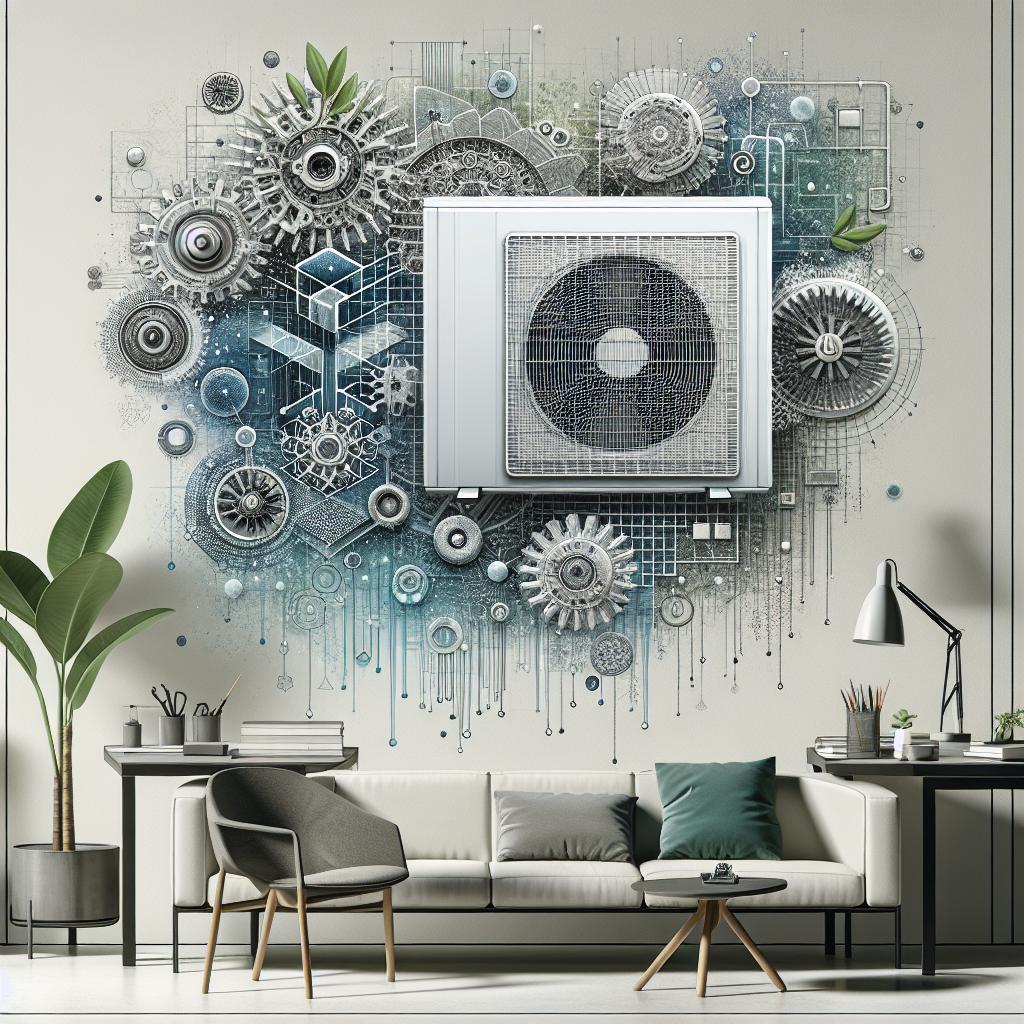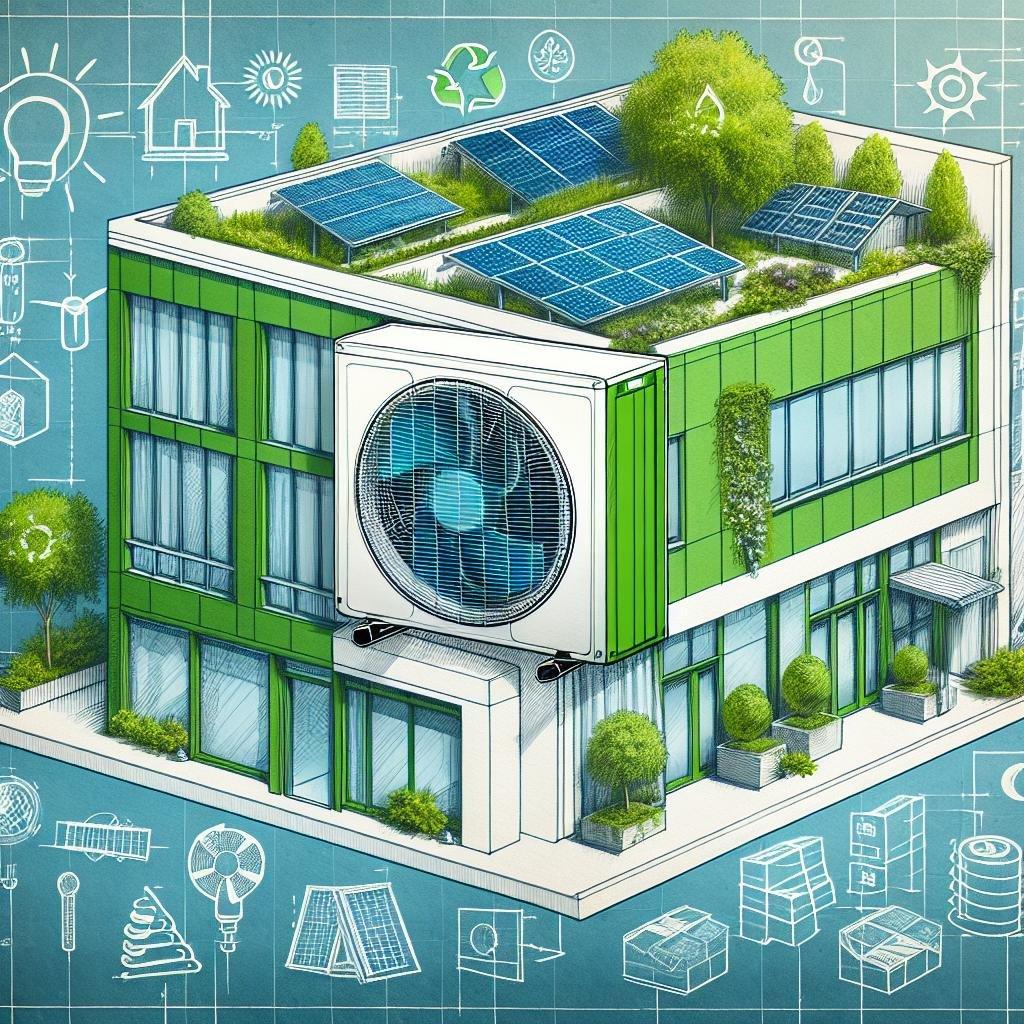In the ever-evolving landscape of enduring architecture, the quest for energy efficiency is at the forefront of design innovation. as commercial properties compete not just in aesthetics but also in ecological responsibility, the integration of smart technologies has become paramount. Among these advancements, mini split air conditioning systems are emerging as vital players in the green building arena.These compact, versatile units promise not only to enhance comfort but also to significantly reduce energy consumption. As we delve into the transformative role of mini split AC systems,we will explore how they contribute to environmentally conscious design,revolutionizing the way we think about climate control in commercial spaces. From reducing carbon footprints to optimizing energy performance, the impact of these systems extends far beyond comfort, marking a crucial step in the journey towards a more sustainable future.
Understanding Mini Split AC Systems and their Energy Efficiency Benefits
Mini split AC systems offer a highly efficient solution for temperature control in commercial spaces, making them a popular choice in green building designs. These systems function through a split-ductless design, which consists of an outdoor compressor and one or more indoor units.This configuration allows for zoned cooling, enabling individual room temperature regulation and minimizing energy waste. By installing mini splits, businesses can achieve notable energy savings, as they consume less energy compared to traditional HVAC systems. this not only reduces operational costs, but also lowers the overall carbon footprint of a building, aligning with sustainable construction practices.
Another remarkable aspect of mini split AC systems is their high SEER (Seasonal Energy Efficiency Ratio) ratings, which can ofen exceed 20. this high efficiency is especially advantageous in commercial environments were energy demand varies across different areas. Additionally, with features like inverter technology, mini splits can adjust the compressor speed to maintain the desired temperature without the frequent on/off cycles associated with conventional systems. Below is a summary of the energy efficiency benefits:
| Benefit | Description |
|---|---|
| Energy Savings | Lower operational costs due to reduced energy consumption. |
| Zoned Control | Individual temperature settings for different rooms or areas. |
| High Efficiency Ratings | SEER ratings often above 20, surpassing traditional systems. |
| Inverter Technology | Variable-speed compressors reduce energy waste and ensure comfort. |
Integrating Mini Split AC into Sustainable Building Practices
Mini split AC systems are revolutionizing how commercial buildings approach climate control while emphasizing sustainability. These systems offer a high degree of energy efficiency, primarily due to their ability to operate without ductwork, which eliminates the energy losses commonly associated with traditional HVAC systems. By directly supplying conditioned air to individual zones, mini splits allow for precise temperature control, leading to reduced energy consumption. Furthermore, the use of inverter technology enables the compressor to adjust its speed according to the room’s cooling or heating demands, significantly decreasing electricity usage during off-peak times.
Integrating mini split systems into sustainable building practices also aligns with contemporary design principles that prioritize renewable energy sources. Many mini splits are compatible with solar panels and smart building technologies, providing a synergistic approach to energy management. A well-designed system not only enhances indoor air quality with advanced filtration but also contributes to the building’s overall sustainability goals. Here’s a fast overview of their benefits:
| Benefits | Details |
|---|---|
| Energy Efficiency | reduces utility costs through direct zoned cooling/heating. |
| Environmentally Kind | Lower carbon footprint compared to traditional HVAC. |
| Flexible Installation | Ideal for retrofits and new constructions alike. |
| Advanced Technology | Inverter drives and smart thermostats promote optimal energy usage. |

Enhancing Indoor Air Quality with Mini Split Technology
Mini split systems play a pivotal role in achieving superior indoor air quality, serving both functional and eco-friendly purposes in commercial spaces. These systems are designed with multiple features that actively improve air circulation and filtration. With built-in advanced filters, they can effectively reduce allergens, dust, and other airborne pollutants, ensuring that occupants breathe cleaner air. The dual functionality of heating and cooling allows for optimal temperature control, which is essential in maintaining a agreeable indoor habitat while reducing the reliance on fossil fuels.
Additionally, mini split technology allows for zoned cooling, making it possible to tailor the climate in specific areas of a building. This not only enhances comfort but also leads to significant energy savings, which is a cornerstone of sustainable building practices. Here are some key benefits of utilizing mini split systems in commercial properties:
- Energy Efficiency: Reduces energy consumption with targeted cooling.
- Noise Reduction: Operates quietly, minimizing distractions in workplace environments.
- Flexible Installation: Can be installed in various layouts, maintaining aesthetic integrity.

Future Trends: Innovations in Mini split Systems for Commercial Spaces
As the demand for energy-efficient solutions rises, innovations in mini split systems are paving the way for advanced climate control in commercial environments. These systems are evolving beyond mere temperature regulation,integrating smart technology and enhanced functionality to reduce energy consumption and improve comfort levels. One of the significant trends is the incorporation of IoT (Internet of Things) capabilities, which allows users to monitor and adjust their systems remotely, optimizing energy use in real-time. Key features include:
- Smart sensors that detect occupancy and adjust settings accordingly.
- Variable refrigerant flow (VRF) technology for precise temperature control.
- Whisper-quiet operation to maintain a peaceful work environment.
Moreover, manufacturers are placing emphasis on sustainability by adopting eco-friendly refrigerants and implementing designs that facilitate easy retrofitting into existing structures. This trend not only showcases a commitment to reducing carbon footprints but also enhances the overall aesthetic and functional appeal of commercial properties. A prime innovation is the shift towards modular systems, allowing businesses to expand or modify their climate control solutions easily. The benefits of these systems can be summarized succinctly in the table below:
| Feature | Benefit |
|---|---|
| IoT Integration | Real-time adjustments for energy savings |
| VRF Technology | Enhanced comfort with targeted cooling/heating |
| Eco-friendly Refrigerants | Reduced impact on the environment |
| Modular Design | Flexible installation and scalability |
Q&A
Q&A: The Role of Mini Split AC in Green Building Design for Commercial Properties
Q1: what are mini split AC systems,and how do they differ from traditional HVAC options?
A: Mini split AC systems,also known as ductless mini splits,consist of an outdoor compressor unit and one or more indoor air handling units. Unlike traditional HVAC systems that require extensive ductwork, mini splits deliver conditioned air directly to individual rooms. this ductless design not only simplifies installation but also enhances energy efficiency by reducing losses typically associated with leaky ductwork.
Q2: Why are mini split AC systems considered an ideal choice for green building design?
A: Mini split systems contribute to green building design in several ways. They have significantly higher energy efficiency ratings (SEER ratings) compared to traditional systems, which can lead to reduced energy consumption and lower utility bills. Additionally, their targeted heating and cooling capabilities mean that spaces can be climate-controlled only when occupied, maximizing energy savings without compromising comfort.
Q3: What are some specific environmental benefits of using mini split AC systems?
A: Beyond their energy efficiency, mini splits have a lower environmental impact due to their reduced greenhouse gas emissions. Many models utilize eco-friendly refrigerants, decreasing ozone depletion potential. Moreover, their modular design allows for easy integration with renewable energy sources, such as solar panels, enhancing a commercial property’s sustainability profile.
Q4: How do mini splits contribute to occupant comfort in commercial spaces?
A: Mini split AC systems offer precise temperature control and quieter operation than traditional systems, significantly enhancing occupant comfort.The ability to control temperatures in individual zones ensures that every part of the commercial space can maintain an ideal indoor climate, which can positively effect productivity and well-being.
Q5: How can building owners justify the initial investment in mini split systems?
A: While the initial investment may be higher, building owners can justify the cost through the long-term savings generated by lower energy bills, reduced maintenance costs, and potential eligibility for green building incentives and tax credits. Additionally,the increased comfort and productivity that mini splits provide can lead to higher tenant satisfaction and retention,ultimately benefiting the property’s bottom line.
Q6: Are there any challenges associated with implementing mini split AC systems in commercial properties?
A: like any system, mini split AC installations come with their own set of challenges. These can include costs related to the initial installation,the need for regular maintenance to ensure efficiency,and potential aesthetic concerns regarding the location of indoor units. however,with proper planning and design considerations,these challenges can be effectively managed.
Q7: What should commercial property owners consider when selecting mini split systems?
A: Owners should evaluate the specific cooling and heating requirements of their space, considering factors like square footage, ceiling height, and insulation quality. Additionally,researching units with high SEER and EER ratings,energy-efficient features,and eco-friendly refrigerants is essential. Consulting with HVAC professionals to design a tailored system can enhance performance and energy savings.
Q8: Can mini split AC systems integrate with other sustainable technologies?
A: Absolutely! Mini splits can easily be integrated with renewable energy systems such as solar panels or geothermal energy solutions. This synergy enhances overall energy efficiency and further minimizes the carbon footprint of the commercial property,aligning with the principles of green building design.
Q9: What is the future of mini split AC systems in the context of sustainable building design?
A: As the focus on sustainability and energy efficiency continues to increase, mini split AC systems are likely to play an even more crucial role in commercial properties. Innovations in technology, improved refrigerants, and greater awareness of environmental impacts are expected to drive the evolution of these systems, making them an essential component of future green building designs.
—
This Q&A aims to provide a comprehensive overview of mini split AC systems, highlighting their significance in green building practices for commercial properties while addressing common inquiries and concerns.
Closing Remarks
In an era where sustainability is not just a trend but a necessity, the integration of mini split AC systems into green building design stands out as a beacon of innovation and efficiency. These systems not only provide targeted comfort and improved energy efficiency but also align seamlessly with the principles of environmentally conscious architecture. as we move forward, embracing technologies that reduce our carbon footprint while enhancing occupant comfort is vital. Mini split AC units exemplify this balance, offering a practical solution for commercial properties that aspire to embody both eco-friendliness and modern functionality.As architects, builders, and business owners continue to reimagine our urban landscapes, the role of mini split systems will only grow in importance. Their ability to adapt to various spaces and needs makes them an essential component in the toolbox of sustainable design. By prioritizing energy-efficient solutions that respect our planet, we can pave the way for a future where comfort and conservation coexist harmoniously. In our quest for greener buildings, mini split AC systems remind us that efficiency and comfort are not mutually exclusive, but rather, essential allies on the road to a sustainable tomorrow.

